02:15
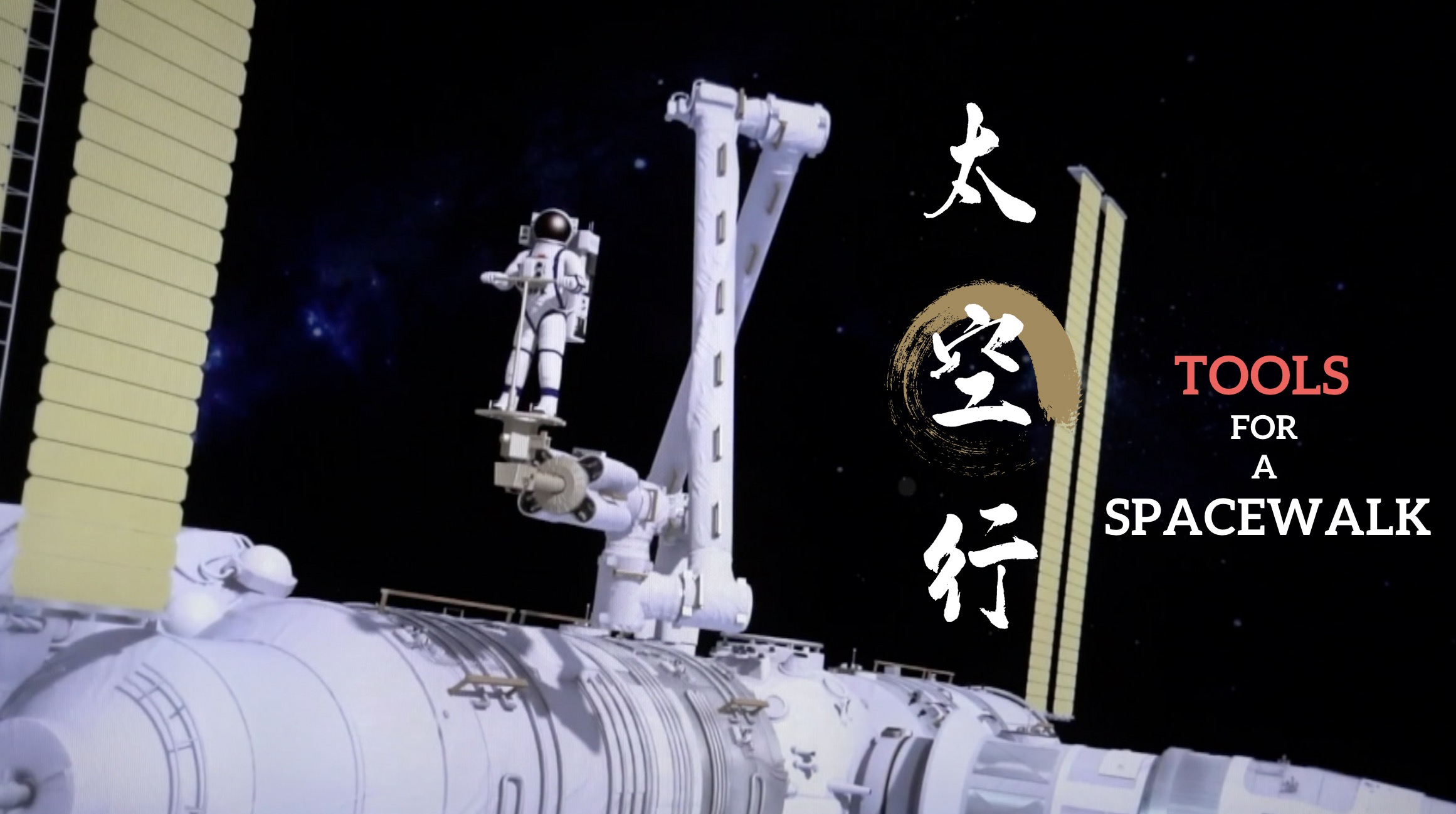
A little over two weeks into their mission, the three taikonauts aboard the Tianhe core module of China's space station are stepping out of their comfort zone for the first time.
On Sunday, they took their first steps outside the cabin for extravehicular activities.
"The taikonauts will first come out from the node cabin of the core module, each wearing a spacesuit. With the help of handles, they could move or stand on a robotic arm, which can carry them to where they need to get the work done," explained Fan Gaojie, chief of Flight Control Technology of Tiangong Space Station System at the China Academy of Space Technology (CAST), ahead of the big day.
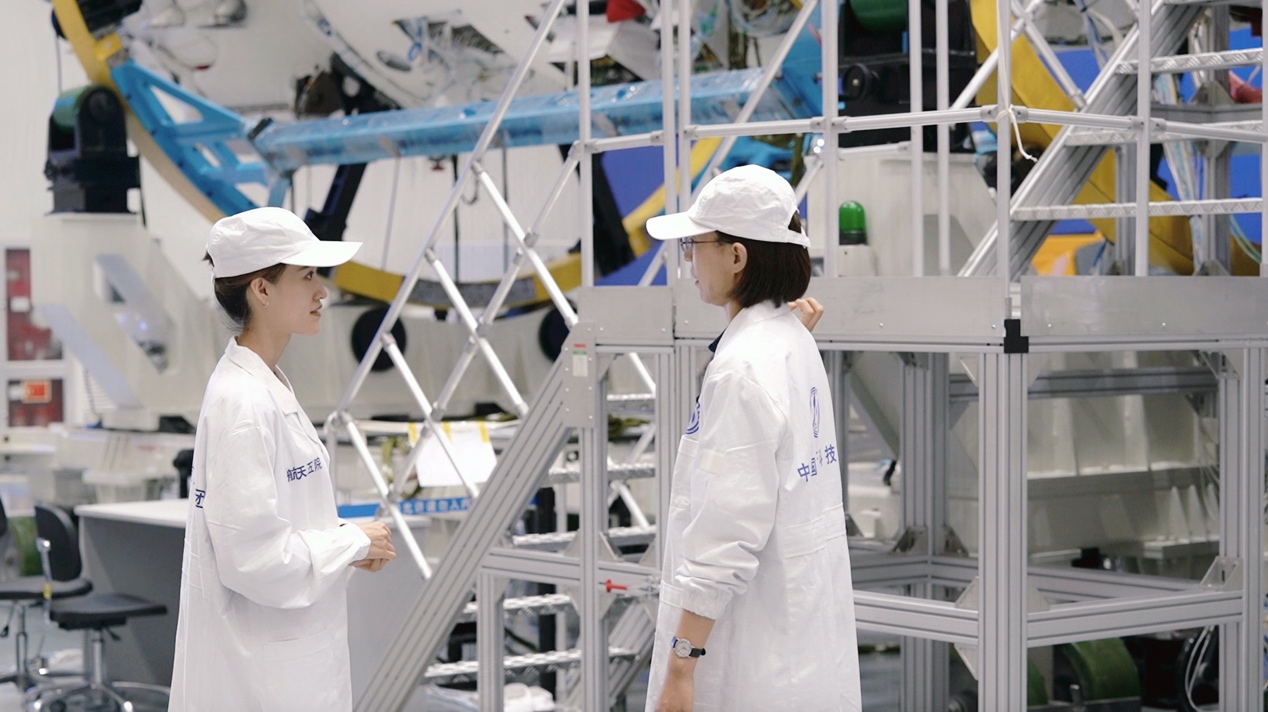
Fan Gaojie (R), chief of Flight Control Technology of Tiangong Space Station System at CAST, introduces the mission of the spacewalk to CGTN reporter. /CGTN
Fan Gaojie (R), chief of Flight Control Technology of Tiangong Space Station System at CAST, introduces the mission of the spacewalk to CGTN reporter. /CGTN
Teamwork is needed. As Fan explained, taikonaut Liu Boming will first take the robotic arm and then Tang Hongbo will crawl to the work site with the help of safety cables. Meanwhile, Nie Haisheng will operate the robotic arm from inside the module and observed the situation outside, helping his teammates in completing the task.
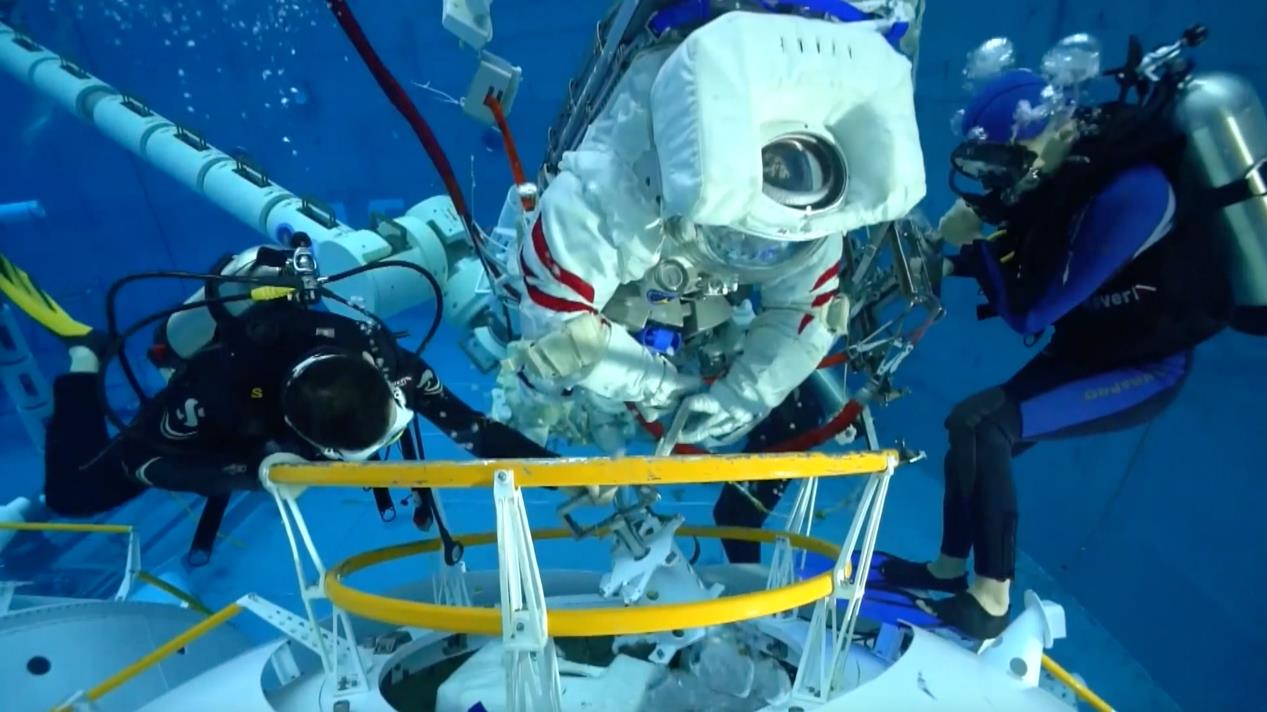
Shenzhou-12 taikonauts train for their extravehicular missions underwater, in Beijing, China. /China Media Group
Shenzhou-12 taikonauts train for their extravehicular missions underwater, in Beijing, China. /China Media Group
"One of their tasks is to position a camera to get a better view of the environment, the robotic arm's movement and that of the taikonauts outside the module," Fan said.
If you see the exact Tianhe core module on the ground and its large sophisticated outlook, you will understand the huge efforts behind each space mission, including spacewalks that allow taikonauts to do equipment maintenance and test.
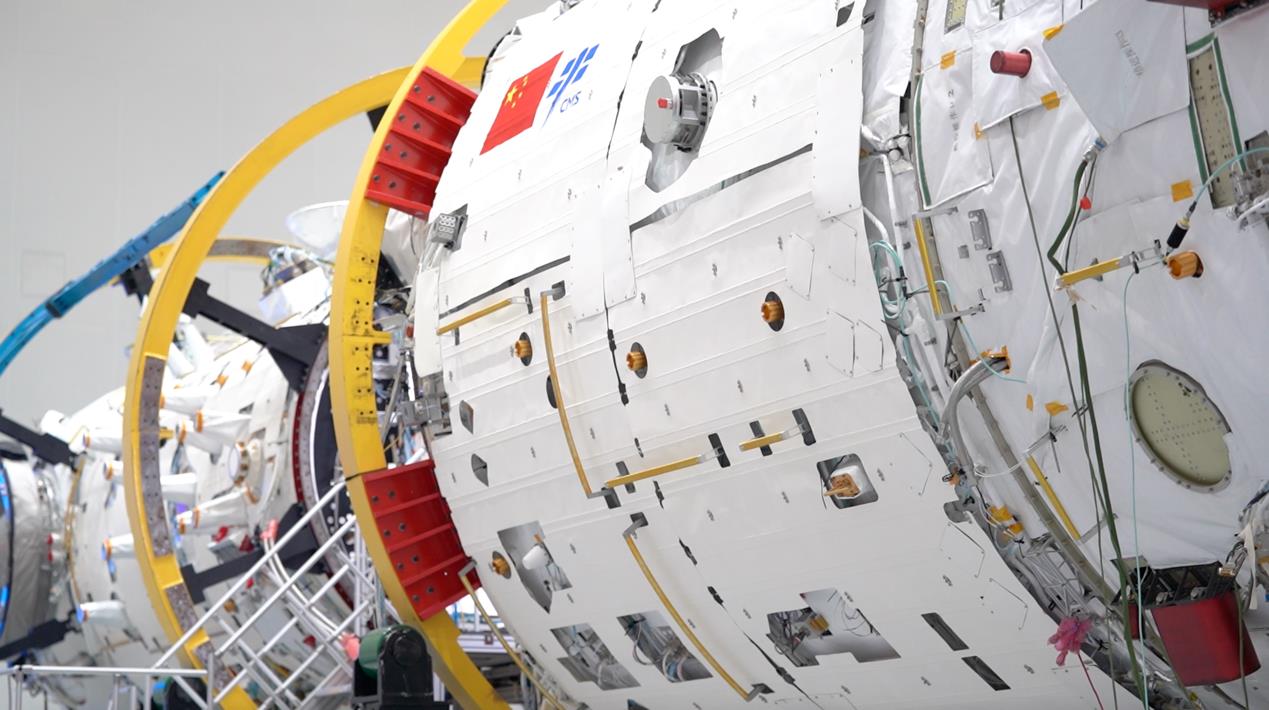
The Tianhe core module at CAST. /CGTN
The Tianhe core module at CAST. /CGTN
Being a repairperson in outer space is harder than it sounds. Zero gravity and extreme temperatures are just some of the challenges. The thickness of the spacesuit will also affect the taikonauts' mobility.
To help them in the work, engineers have designed auxiliary tools that can adapt to the space environment. One such example is the foot restraint that connects the taikonaut and the robotic arm.
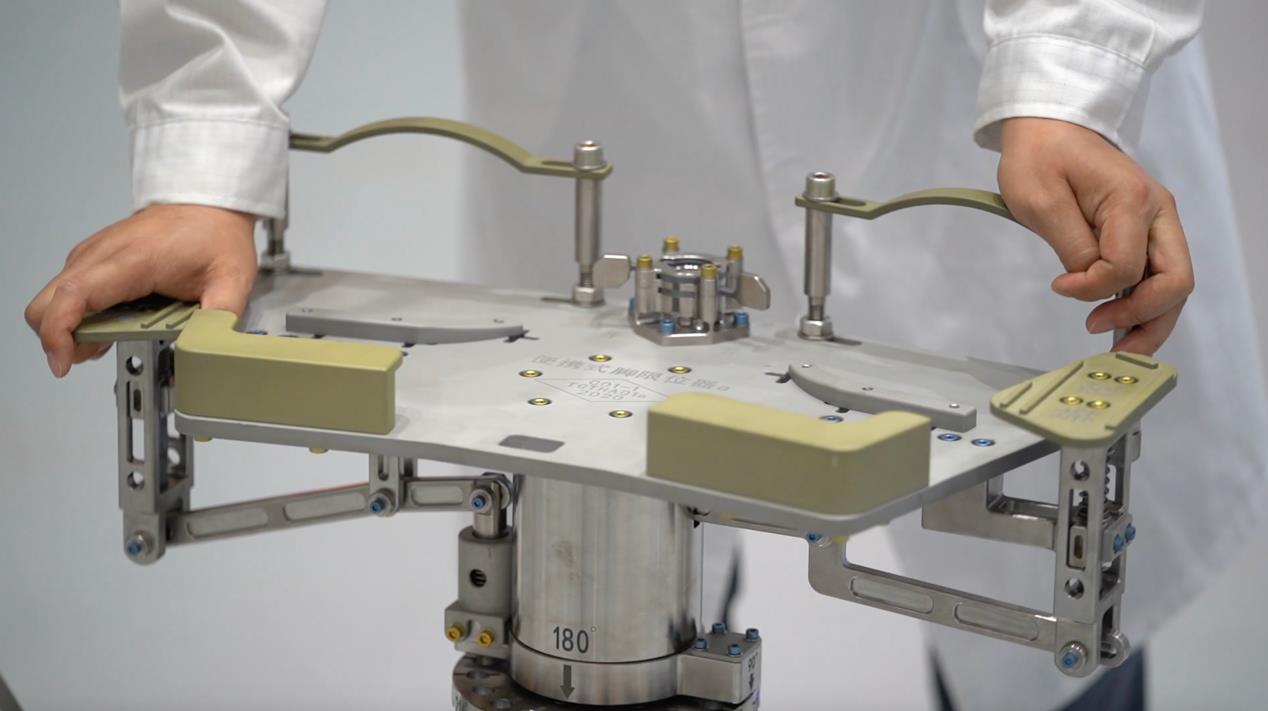
The foot restraint. /CGTN
The foot restraint. /CGTN
"The foot restraint is to fix their feet and adjust their posture. The taikonaut can rotate or tilt through the joints," said Fu Hao, chief engineer of Extravehicular Maintenance Tools of Tiangong Space Station System at CAST.
The workbench is another necessary tool.
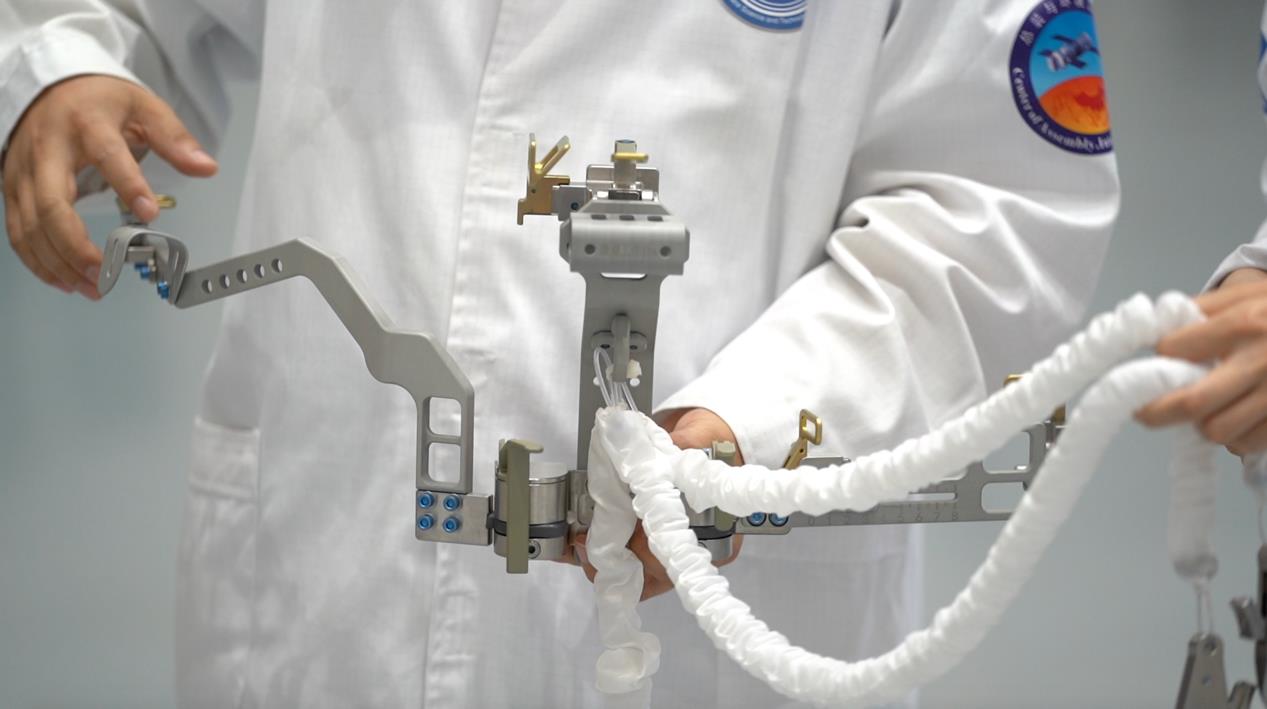
The miniature workbench. /CGTN
The miniature workbench. /CGTN
"The miniature workbench can be fixed to the taikonauts' waists. It makes it easier for them to pick up and drop tools."
Fu said the best thing about these tools is that they allow taikonauts to operate with one hand, freeing up the other to hold onto the body of the vehicle and control their posture.
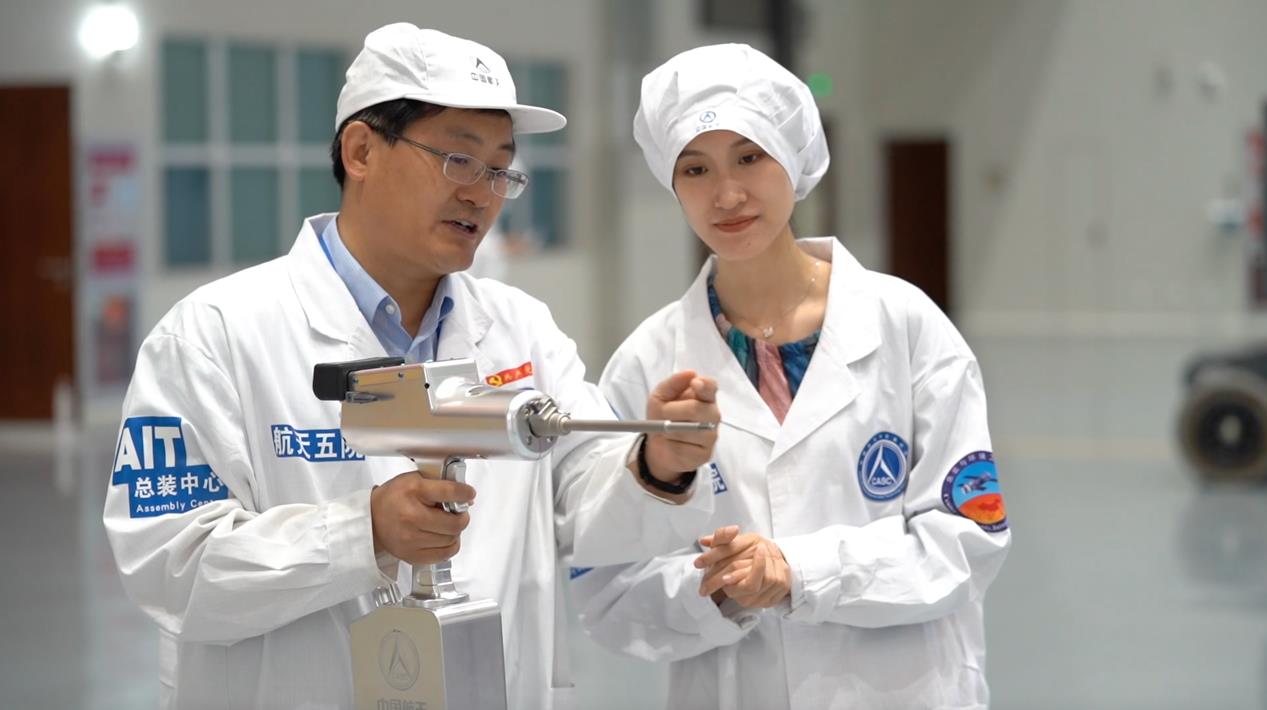
Chinese engineer Fu Hao (L) introduces the auxiliary tools for the extravehicular missions to CGTN reporter. /CGTN
Chinese engineer Fu Hao (L) introduces the auxiliary tools for the extravehicular missions to CGTN reporter. /CGTN
Expert says the spacesuits, robotic arms and auxiliary facilities are the taikonauts' most powerful assistants during the spacewalks.

